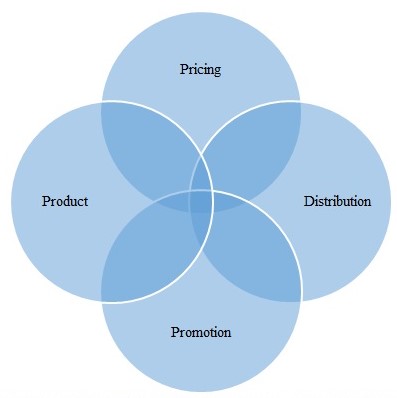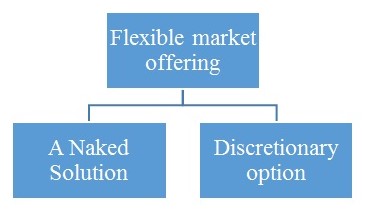Introduction
Marketing of products and services are one of the key success factors for an entrepreneur nowadays and marketing has not confined only to selling of goods and services rather many other important aspects. A medium sized company must follow the relevant approaches to make its marketing program as a better marketing. The most important issues in better marketing are the marketing information and appropriate segmentation. This report will be discussing these two major issues and its implication on “Natural Goodness Plc” along with the appropriate usefulness of relevant theories.
Objectives of the Report
The primary objective of the report is to advice some better marketing approaches for the better profit gain by “Natural Goodness Plc”.
The secondary objectives are:
- Selection of types of marketing information that the company requires to run his business and the proper process to use the information and the probable outcome,
- Indicating the appropriate way of selecting the market segmentation and the possible prospects of these selected segmentations,
Methodology
The descriptive analysis will be use to attain the objectives mentioned. The appropriate theories will be collect from different books and articles and the assumptions and recommendations will based on these theories.
In-depth study
Marketing Information
Marketing information would give in a detailed marketing plan, where hypothetical tests have used to analyse a series of exercises in marketing information. Marketing information is not required for every organisation, but if any organisation want to develop its plan to spread more in a specific market, then collection of marketing information is essential. Natural Goodness Plc can collect information very easily from individual customer information, as because it is a very common consumer food producer in UK market. If this organization want to carry products for upgrading and selling at high value to its consumers, then marketing information gathering and analysing is must to make appropriate decision for this organisation.
Gathering Information on Marketing Environment
Natural Goodness Plc can develop and implement marketing information based on number of decisions, which posses this organisation to be comprehensive, up-to-date information according to customers available in market. These marketing information has effects on both micro and macro trends to run consumer food products business in markets. Marketing environment is continuously presenting new opportunities and threats in UK market for healthy cereal food products. To analyse and adopt these changes, marketing environment should monitor to know what is happening inside and outside this organisation. Some macro and micro level information should always monitor in marketing environment by Natural Goodness Plc, which has briefly discussed in below:
- Target Markets of Natural Goodness Plc: This organisation is mainly marketed healthy cereal food products, which have targeted to health conscious people and who cannot give much effort to their healthiness, because of being busy in their daily life. Therefore, target market of this organisation is health conscious, fitness focused and busy people from age 5 to 40 years old.
- Market Needs of Cereal Food Products: Natural Goodness Plc is providing healthy cereal food products, which can be fulfilled benefits to its customers, by giving quality products to health conscious people. Its products can also provide customers’ experiences and dedication on these products to make proper fitness within their limited period of life.
- Market Trends of Cereal Food Products: Natural Goodness Plc is distinguished itself to provide health care cereal foods, which are not available to consumers before. The market trends have varied in terms of country, continent, age market, and overall international market. As, this organisation is focusing on fitness and health consciousness of customers group, so not only by this segment, but also market it as breakfast food items, which can attract greater market trends of customers.
- Market Growth of Natural Goodness Plc: As there are number of competition in cereal food products, for this reason, Natural Goodness Plc is going down in market steady growth. As, Natural Goodness Plc is focusing on only southern part of Great Britain, so, market growth is comparatively low than other food products available in markets.
- Competition of Natural Goodness Plc: There are many companies of cereal food products, which has not only marketed in Great Britain, but also in international markets. Most of them are focusing on taste, rather than healthiness. Therefore, in context of health consciousness of customers, there are few direct competitors. However, indirect competitors are also manufacturing healthy foods, which can become direct competitors afterwards.
- Key to Success of Natural Goodness Plc: This organisation is designing and producing its market demand to ensure total customers’ satisfaction. If the focus of health consciousness can become a key factor to success, then Natural Goodness Plc is a profitable and sustainable organisation in UK.
- Market Positioning of Natural Goodness Plc: This Company can position itself as moderate priced but cereal food products for highly fitness. This positioning can help to leverage competitive edge and core competencies in highly concerned market environment for health consciousness.
- Marketing Strategy of Natural Goodness Plc: Marketing strategy of this organisation has focused on health, fitness, and natural cereal food products, which can use as breakfast or other meals as dietary supplements for health concern and for busy people. By this strategy, Natural Goodness Plc can cover 80% of cereal food markets in UK market, not only southern part of Great Britain.
- Marketing Mix of Cereal Food Products: Natural Goodness Plc’s marketing mix focusing on following approaches, which are pricing, distribution, promotion and products, shown in below:

- Pricing: Pricing of cereal food products of Natural Goodness Plc is determined by per product retail price in market, by size of packages.
- Distribution: Natural Goodness Plc is going to use direct to consumer distribution model to introduce it in market. However, over time, it will use retailers as distribution channels.
- Promotion: For advertising efforts, Natural Goodness Plc will use different methods for advertising efforts, like broadcasts media, internet, retail outlets etc.
- Products: Finally, the organisation will ensure quality products to its customers.
Collecting Information
Collecting marketing information has based on marketing research of cereal food products in UK market. Information collection is most expensive and complex by conducting surveys. Some respondents may not give proper information about their preferences and choices among public opinion. Some other respondents would refuse to cooperate, and other would give biased and dishonest reply. Therefore, to get right respondents are critical. For this reason, not only survey to potential target market is not enough, but also retailers and suppliers information about market need and demand about its products are also important sources to collect information.
Analysing Information
After that, collected data should be analysed according to researcher of Natural Goodness Plc to measure variables fitted in market. Information can also analysed by advanced statistical tools, which can make proper findings of the data available to organisation.
Marketing Decision
Managers of Natural Goodness Plc have to make decisions based on findings of research, which has matched to evidence. If findings are low, then it can use predisposing to launch the products to UK market. Therefore, information based research can bring proper decision, which may focus on insight into the problems of cereal food products and the possibilities in terms of target market.
Market Segmentation
Understanding of Market Segmentation
Kotler & Armstrong (2006) argued that the company needs a mass-marketing approach. Mass marketing means the huge amount of product production, use heavy efforts to mass distribution, taking mass promotional programs to gain highest possible attention of the mass consumers and ultimately use of mass resources like huge investments. The firm here must produce the mass products, which is cereal-based health foods and snacks. The market demand in this product category is mass. In addition, for this, the company must go for mass production. The factories are located in the southern part of the country. To ensure the mass production the numbers of factories must be increase. Mass distribution will be come through the mass group sales in countrywide which is now only in southern areas. To increase the sales and stimulate it in the massive stage, the demand of the products must increase. Moreover, to increase the demand there must taken extensive advertising and promotion programs. Palmer (2009) stated that the business of the company is currently dependant of the good relationship of the sales people with the retailers. This is a risk for the firm because if any of the sales personnel switch their jobs and join to other company, the related retailers will also go with the personnel and the firm will lose the consumers. Therefore, the company must put the marketing programs aimed at the consumers not the retailers only. That is the firm is now targeted the wrong segment and there must be some serious attention to make a plan to target the appropriate segmentation.
A market segment is a group of people who endeavour a common set of needs and wants. In case of “Natural Goodness Plc”, the target segment is the people who consume the cereal-based health foods and snacks. However, there are some significant criteria to select the appropriate segment.
Appropriate Segmentation Criteria
Flexible market offering in this case is important. ND must take this issue in case of segmentation. The product offerings by the firm must be flexible and to make it flexible, the offering must have two criteria. These are:

The product offer must be a solution of the needs or want of the consumer. For example, there is need and want of cereal and healthy foods in breakfast tables and snacks in the evening. Products offered by the firm must containing ingredients, which do betterment for the health of the consumers. In addition, contains the tasty flavours, which will be a substitute for the other breakfast foods. Discretionary options are the points of difference, which will make the products unique to some extent. “Natural Goodness plc” must market the products with some other offerings, which are not available in the market. For example, the cereals can offer as a readymade food.
In case of segmentation, the consumer preferences are the major issue. In case of preferences, there are three types of segments. These are – Homogenous, diffused, and clustered preferences. For Natural Goodness the preference segment is homogenous. The possible consumers of the company has situated in all over the country. So, that the target segments are wide in numbers and but their needs are same in this case. All of them prefer cereals and snacks in healthy and tasty form. As the company is not diversifying its products by offering different ingredients for different consumer groups, the preference would consider as a homogenous along with the uniqueness it contains. There might be a risk that for no variations in products, many consumers will treat it as a monotonous one and many other consumers who may find substitute flavours after some frequent consumption.
There are four basic criteria based on which the market must be segmented. These are:

All these four criteria are useful in segmenting the health food product market.
The health food product market must target different geographic location within the country. The regions, which have the most number of people has targeted. Besides where the minimization of the transportation cost, warehouse rent cost and the consumption pattern of the consumers in the locality. Now the company has its factories and operations in the southern part of the country, which prevents the firm to get the consumers of the other part of the country. Thus, the firm must target he consumers of all parts of the country. However, there must be a cost benefit analysis. That is the costs related to establish factories, communicating the local retailers and other operations must be less than the profit from the targeted region. Another important aspect, which must assessed, is the average income of that region. If the consumers have enough disposable income to buy frequently, the region must target.
In demographic segmentation, the group has made based on demographic variables like age, gender, occupation, education, family size and life cycle, religion, race, generation, nationality and social class. The firm must target the consumers aged 5 to 40 as the demand of cereals and snacks is high in this age group. Both male and female are the targeted consumers. The nuclear families with children or teenagers will targeted because they have the high demand of these types of semi ready foods in breakfasts. The middle and high-income people are frequent consumers of these foods.
The psychographic base for the consumption of the company’s cereals and snacks the health concern. Now people are more concern about health than before. Therefore, the targeted consumers must be psychologically motivated to eat health friendly foods. These consumers are the thinkers who think about the health of the family member before buying health food products.
In case of the behavioural segmentation, the consumers have divided into groups based on the knowledge and attitudes regarding the healthy foods. There are some behavioural variables. Occasions, benefits, user’s status, usage rate, readiness of the buyer, loyalty of the buyers and attitudes are some of this. In this case, the target consumers have prepared for buying the healthy cereals and snacks. Besides, the consumers must be repeat purchasers.
Conclusion
This report has demonstrated that, Natural Goodness Plc, which is potential producer of cereal food products, can be analysed by proper market information and market segmentation focusing on UK market. Therefore, after conducting and analysing these two parts, it can said that, Natural Goodness Plc has great potential to become successful in food products, which is concentrated not only foods, but also health consciousness of customers in easy way for their busy life.
Reference
Kotler, P., & Armstrong, G. (2006) Principles of Marketing. 11th Ed. New Delhi: Prentice-Hall of India Private Limited.
Palmer, A. (2009) Introduction to Marketing. 2nd ed. Oxford University Press
